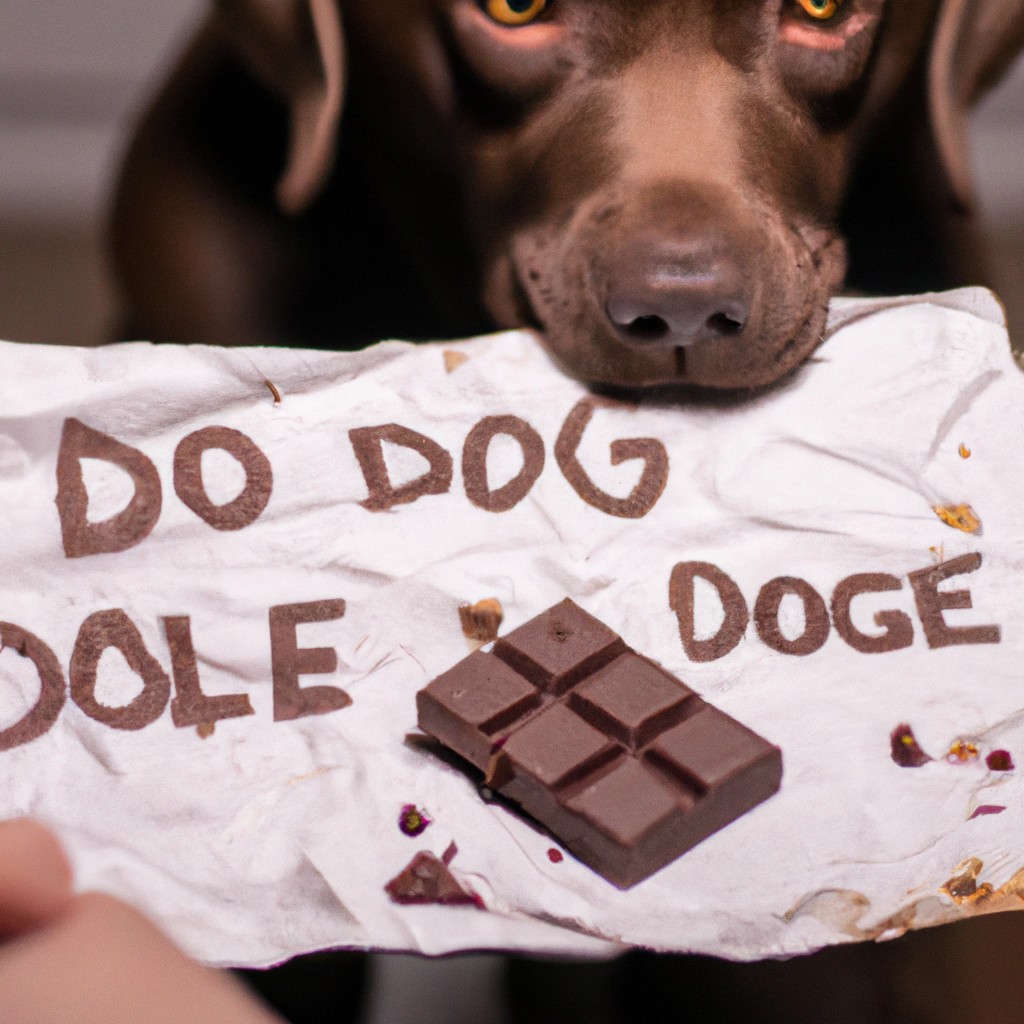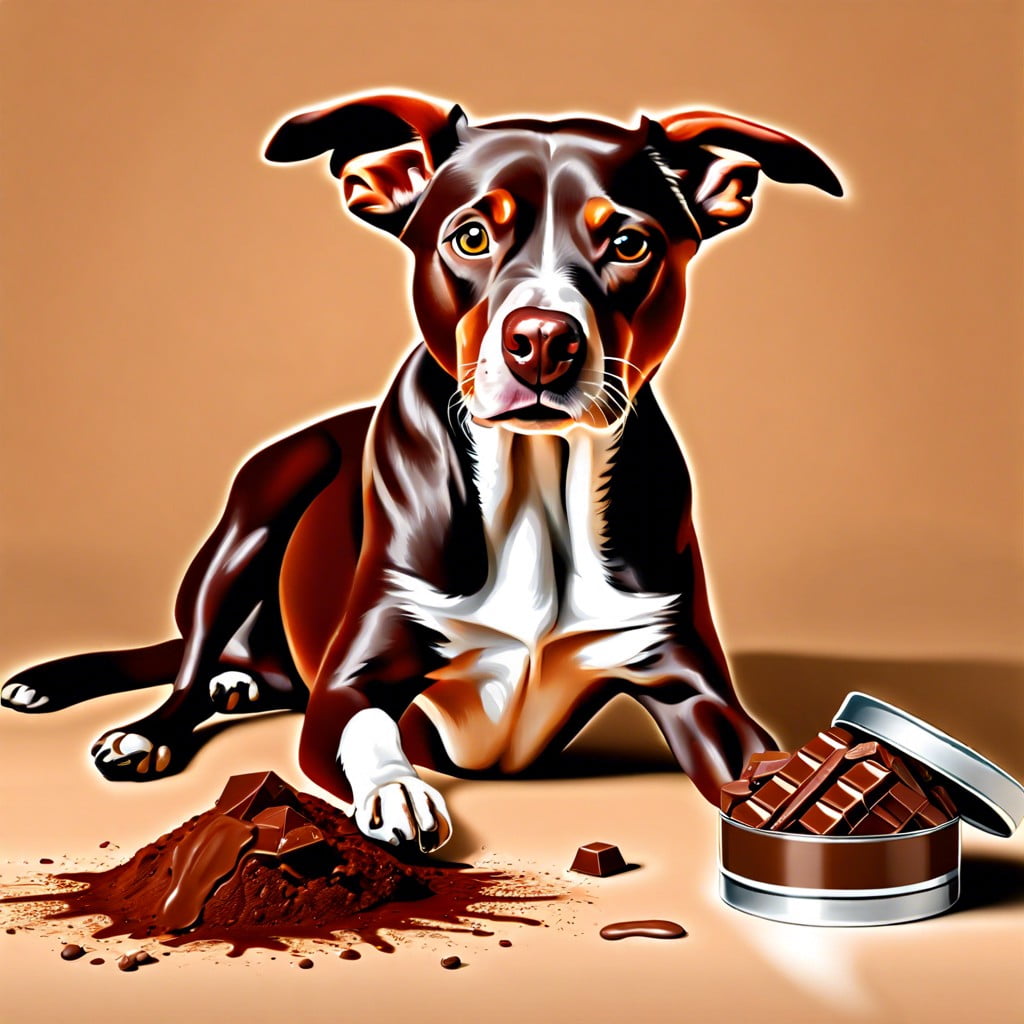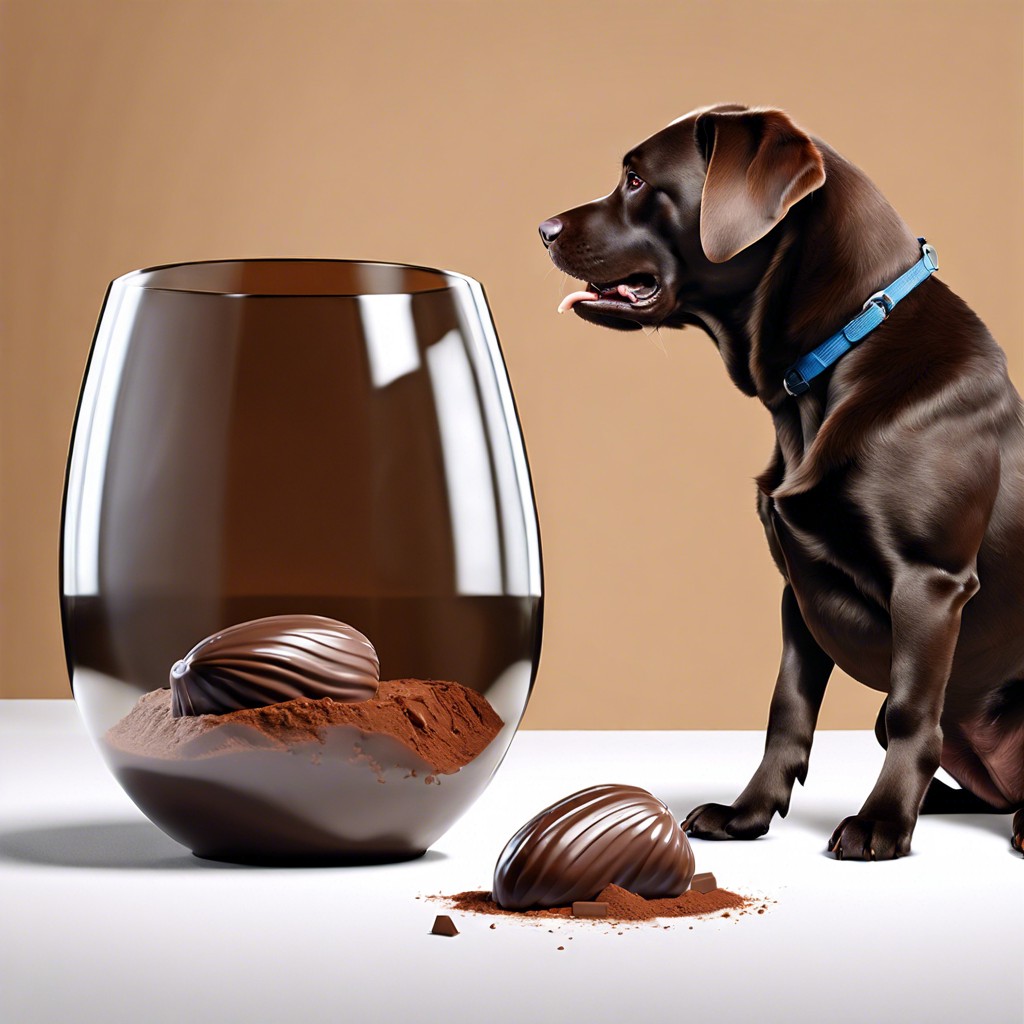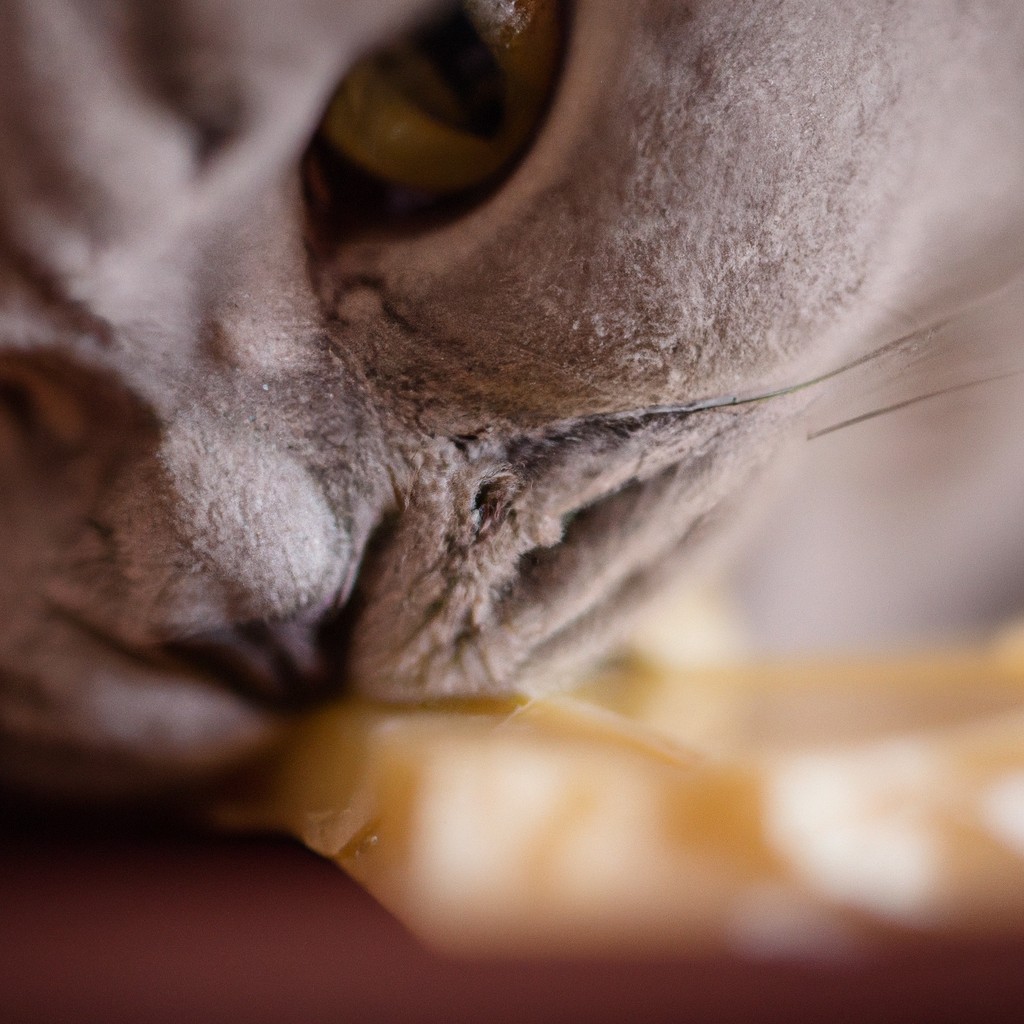This article provides detailed guidelines on immediate actions to take when a dog consumes chocolate, aiming to educate pet owners on the potential risks and steps to ensure canine health.
Key takeaways:
- Chocolate contains theobromine and caffeine, toxic to dogs.
- Symptoms of chocolate poisoning: vomiting, hyperactivity, rapid breathing, abnormal heart rhythm, seizures, weakness or collapse.
- Immediate steps if your dog eats chocolate: assess, collect remnants, consider size and health, call the vet, follow advice.
- Treatment options for chocolate ingestion: induce vomiting, activated charcoal, IV fluids, medications, monitoring.
- Prevention measures: store chocolate safely, educate family members, avoid leaving chocolate unattended, use barriers, be vigilant.
Inside
Why Chocolate Is Toxic to Dogs

Chocolate contains theobromine and caffeine, two stimulants that dogs are unable to metabolize effectively. The canine body processes these compounds much more slowly than the human body does, leading to an accumulation that can be toxic.
The smaller the dog, the less chocolate it takes to cause serious health issues. Different types of chocolate have varying levels of theobromine and caffeine—dark chocolate and baking chocolate contain the highest concentrations, making them the most dangerous, while milk chocolate and white chocolate have lower levels.
Even small amounts of chocolate can cause adverse reactions, so it’s important to be mindful of this when chocolate is within your dog’s reach. Safe consumption of chocolate for humans does not translate to safety for dogs, due to these fundamental physiological differences.
Symptoms of Chocolate Poisoning in Dogs
Recognizing the signs of chocolate poisoning promptly can be lifesaving for your pet. Key symptoms often manifest within six to 12 hours post-ingestion and can include:
- Vomiting and diarrhea: These are common first indicators of toxicity.
- Hyperactivity: A sudden increase in energy may be a sign of chocolate’s stimulant effects.
- Rapid breathing: This symptom results from theobromine’s impact on the dog’s central nervous system.
- Abnormal heart rhythm: The methylxanthines in chocolate can affect heart function.
- Seizures: In severe cases, chocolate toxicity may lead to seizures.
- Weakness or collapse: If the dog appears unusually lethargic or collapses, it may be experiencing the toxic effects of chocolate.
If you observe these signs, especially after known chocolate exposure, prompt veterinary attention is crucial.
Immediate Steps to Take If Your Dog Eats Chocolate
Upon discovering that your dog has consumed chocolate, act swiftly to mitigate risks:
1. Assess the situation – Determine how much and what type of chocolate your dog has eaten. Dark and baking chocolates are more dangerous than milk chocolate.
2. Collect chocolate remnants – Save any remaining chocolate or packaging for reference. This can be important for your veterinarian to understand the potential level of toxicity.
3. Consider your dog’s size and health – Smaller dogs and those with pre-existing health conditions may be in greater danger. Larger dogs may tolerate the same amount of chocolate better, although they are still at risk.
4. Call your vet or an emergency veterinarian clinic – Provide them with details including the type of chocolate, the amount ingested and when it was eaten, as well as your dog’s breed, age, and weight.
5. Follow professional advice – Your vet may instruct you to monitor your dog, induce vomiting, or bring him in for treatment.
6. Stay calm – While prompt action is necessary, staying composed is crucial for effectively managing the situation.
Keeping these immediate steps in mind will facilitate a rapid response that could save your dog’s life.
Treatment Options for Chocolate Ingestion in Dogs
Upon confirming that a dog has ingested chocolate, a veterinarian may perform several procedures to mitigate the effects of theobromine and caffeine, the toxic components in chocolate:
1. Inducing Vomiting: If action is taken promptly—typically within two hours of ingestion—veterinarians may induce vomiting to expel the chocolate from the dog’s stomach before more theobromine can be absorbed.
2. Administration of Activated Charcoal: Activated charcoal can prevent the absorption of theobromine into the bloodstream, and might be administered multiple times depending on the severity of the case.
3. Intravenous Fluids: To accelerate the excretion of theobromine through the kidneys, vets may administer IV fluids. This process also maintains hydration and supports blood pressure.
4. Medications: Depending on symptoms, a dog may require medications to manage heart rate, seizure activity, or to sedate an overly agitated animal.
5. Monitoring: Close monitoring is critical, especially for signs of complications such as heart arrhythmias or seizures. This may require hospitalization for severe cases.
Veterinary methods are tailored to the size of the dog, the type of chocolate consumed, and the time elapsed since ingestion. Treatment aims to minimize absorption, speed up excretion, and address any symptoms, ensuring the best chance for a full recovery.
Preventing Future Chocolate Incidents
Safeguard all chocolate products by storing them in high cabinets or places inaccessible to dogs. Use child-proof locks on cupboards if necessary.
Educate family members, including children, about the dangers of chocolate to pets and the importance of keeping sweets out of their reach.
Avoid leaving chocolate or chocolate-containing products unattended, especially during holidays like Easter or Halloween when chocolate is more abundant.
Consider using pet barriers to keep dogs out of certain areas, such as the kitchen, where they might encounter chocolate.
Be vigilant during walks, as dogs may find or scavenge chocolates in public spaces.
If you suspect that someone may have given your pet chocolate, communicate the health risks and politely ask them to refrain from doing so.
Keep an emergency vet contact handy, just in case inadvertent chocolate consumption does occur despite these precautions.




